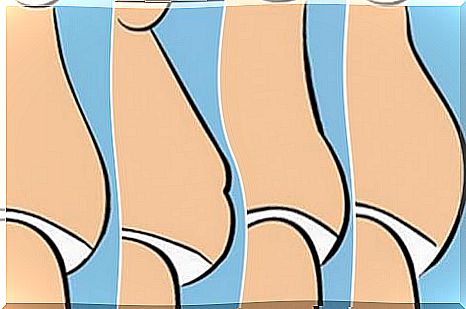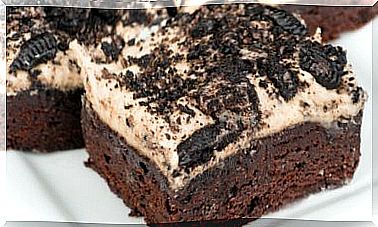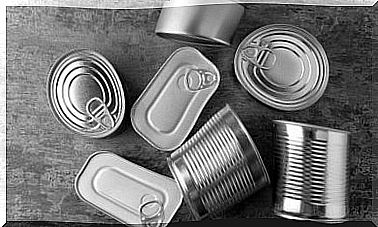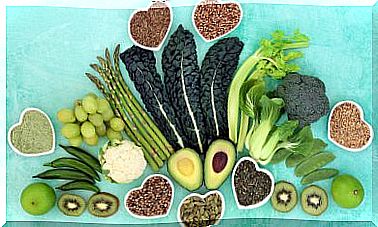What Does Your Belly Type Tell You? Find Out!
Contrary to what many may think, the accumulation of fat in the belly or the fact that this area becomes more prominent is not only due to overeating.

As you well know , there are different types of belly. The most common causes of having a larger belly are: excess fat, bloating or fluid retention, and even as a result of having given birth.
Treating the cause can help reduce your belly. Here, we tell you how.
What does the belly say about us?
Showing off a flat stomach is the dream of many women. Some go on strict diets and others spend hours in the gym to achieve it.
However, there are those who cannot achieve their goal. Why? Because they do not perform a specific treatment according to your type of belly.
It is necessary that you know which is the shape that most closely resembles your stomach. Then you can find the correct way to obtain the desired results.
It’s not about doing a thousand sit-ups a day, or starving. There are other effective and not so strict techniques.
The different types of belly are:
1. Swollen belly
The main characteristic of this belly is that it is flatter in the morning than in the afternoon.
The distension increases as the hours go by. This can occur from a build-up of gas or indigestion.
This type of belly can affect both overweight and thin women. It is related to food intolerances, allergies or as a result of a deficient diet.

The most common intolerances are lactose, yeast, alcohol, and wheat or gluten. You can do the test and stop eating some of these food groups, but before doing so, you should consult with your doctor. So you can analyze if any causes swelling. However, to find out, as we have already said, it is necessary to go to a specialist.
If that’s the case, the next step is to eliminate them from your diet.
We also recommend that:
- Don’t eat too late at night. According to this study from the Mexican Journal of Eating Disorders, eating at night could be an important factor related to obesity.
- Drink lots of water during the day.
- Add healthy probiotics to your body. In this way, you will help promote the work of the intestinal flora.
2. Postpartum belly
If you have recently given birth, you can have this type of belly. It is bulky at the bottom, and can occur even after two years of delivery.
After pregnancy, the uterus “lowers” and becomes heavier. It may take at least a few months to get back to normal. However, sometimes this takes much longer.

This suggests that you don’t need to start exercising abruptly. On the contrary, it is recommended to wait about three months. Obsessing over weight gain is also not helpful. It is important that you take care of your health and that of the baby.
Once you are a little more relaxed and want to start taking charge of your body (and the typical maternity brands), it is believed that consuming fish oil supplements could help you lose weight thanks to the production of the hormones in charge to reduce appetite. However, there are no scientific studies to support this claim.
Another option is to consume unsaturated fatty acids (present in avocado, salmon and chia seeds, for example). They provide many nutrients, and although they do not help you lose weight, they will help you feel more energetic.
For the belly to be stronger you need to perform pelvic exercises. The best known is that of Kegel. The abs are not so recommended, because they are designed for muscles in good shape. After delivery, they separate and it is necessary to allow them to recover.
3. Small and low belly
It is typical of those women who have very demanding careers or mothers who are too busy.
It can even appear in those who go to the gym or diet but always repeat the same exercises and the same dishes.

The bad habits related to this type of belly are excessive abs or routines that do not change (for example, always spinning ).
These cause a burning of fat from the hips, legs or arms, but not from the belly.
Good nutrition is essential to eliminate this little belly. This way you will also avoid constipation or bloating.
- Eat more green leafy vegetables and foods with fiber.
- Swap your abs for push-ups or resistance exercises.
- Introduce circuits that contain strength and aerobic exercises (squats, jump rope, etc.). According to a study published in the Medical Journal of Chile, the latter would promote fat loss.
4. Stress belly
Sitting in the office for long hours at the computer and eating snacks is bad for your health in many ways. One of the main victims is the belly.
This type of belly is characterized by a hard and prominent swelling in the area that goes from the diaphragm to the navel.
It is produced not only by the unhealthy food we eat, but also by the production of a hormone called cortisol (which, according to various studies, accumulates fat around the stomach).

If you overdo it with processed products, eat a lot of fast food and don’t have fixed schedules, you will be more prone to this type of belly.
One of the ways to avoid this is to rest more, since in this way your body will regulate itself and the production of cortisol will decrease. In the same way, studies such as the one published by the UNAM Faculty of Medicine, affirm that lack of sleep would cause a greater risk of obesity.
Fight burnout with nutritious foods like nuts.
You should also reduce your coffee consumption to two cups a day and do more relaxing exercises than aerobics (yoga, tai chi, walks in the park, etc.).








